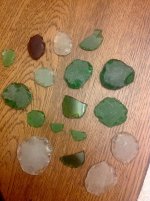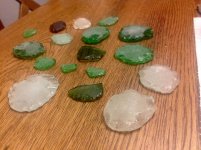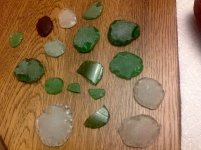For starters this is probably the most questionable thing I have ever posted. As of last summer I have found a couple of fairly old black/green glass. The odd thing is I am fairly certain these pieces of glass are older than any of the sites I detect. I posted this piece earlier to the glass forum to try and get a date, but now I noticed one of them almost looks like it was worked? It’s probably post deposit damage, but I have never seen glass break like this. I know natives were in my area until the early 1800’s. Any thoughts on the matter would be appreciated, and thanks for humoring me and my crackpot post!






Amazon Forum Fav 👍
Upvote
0

















